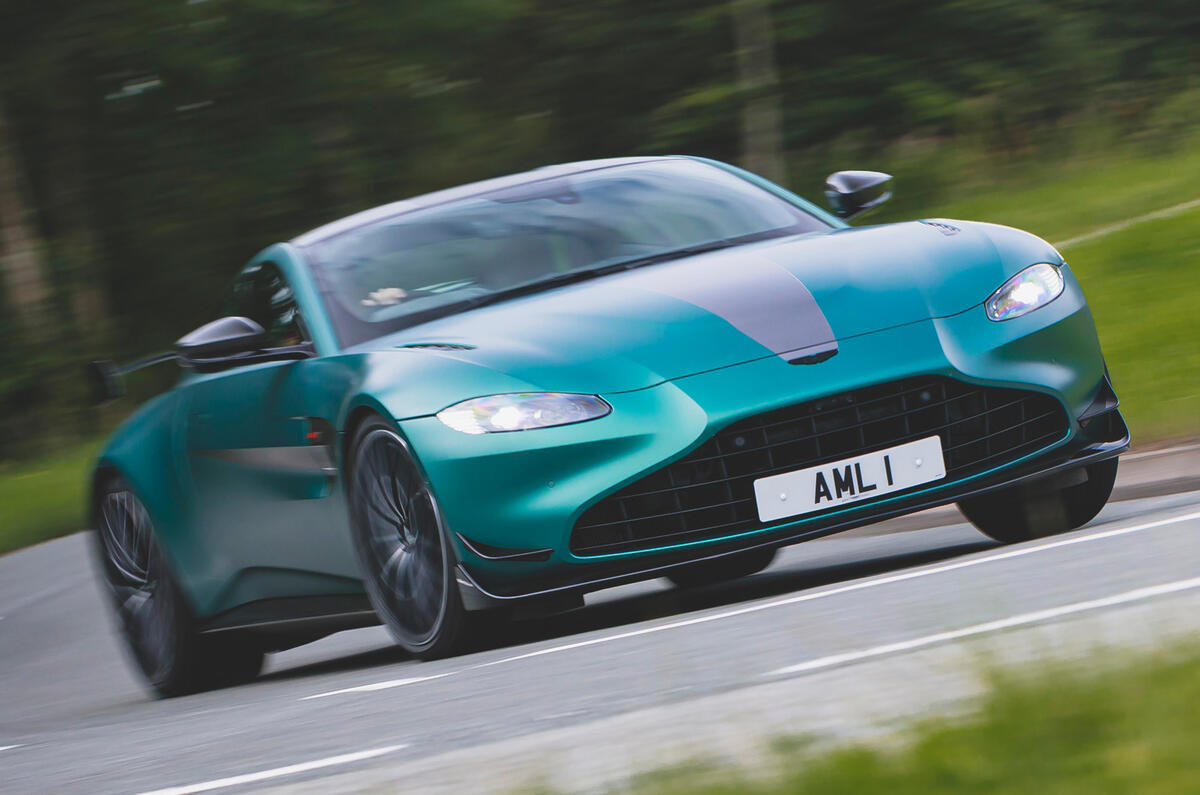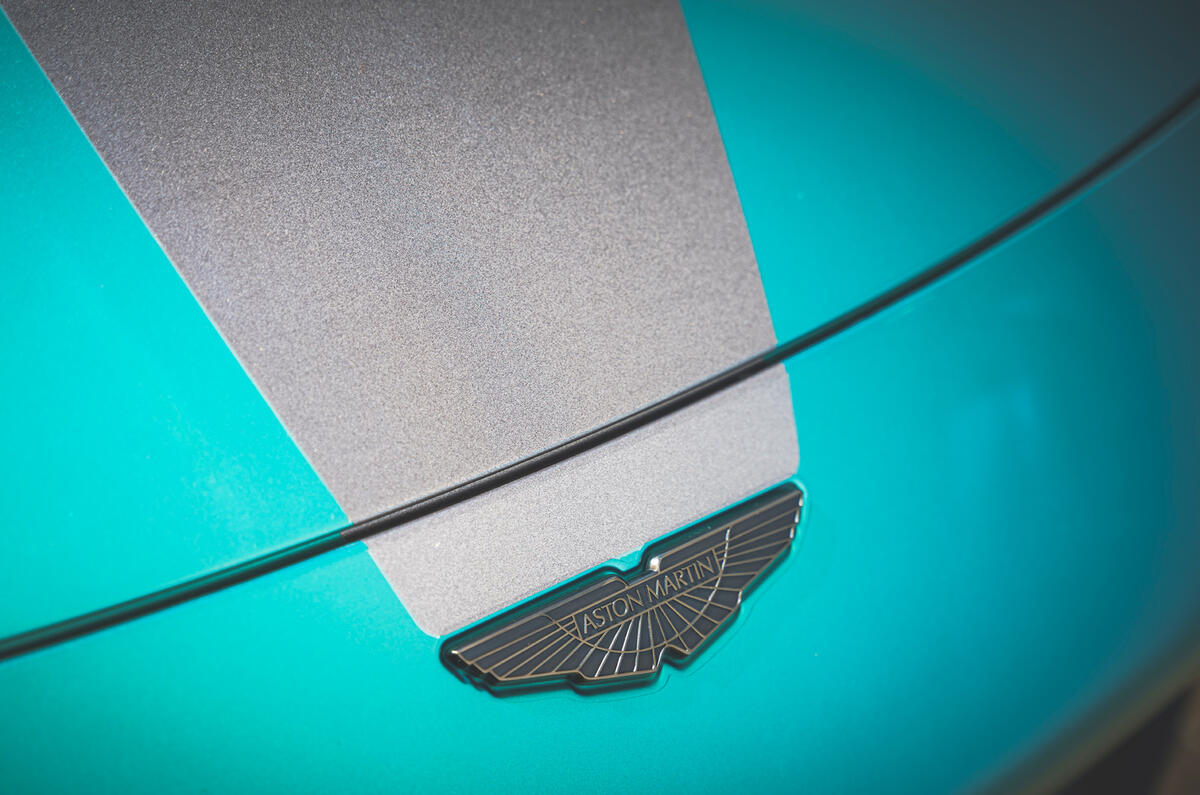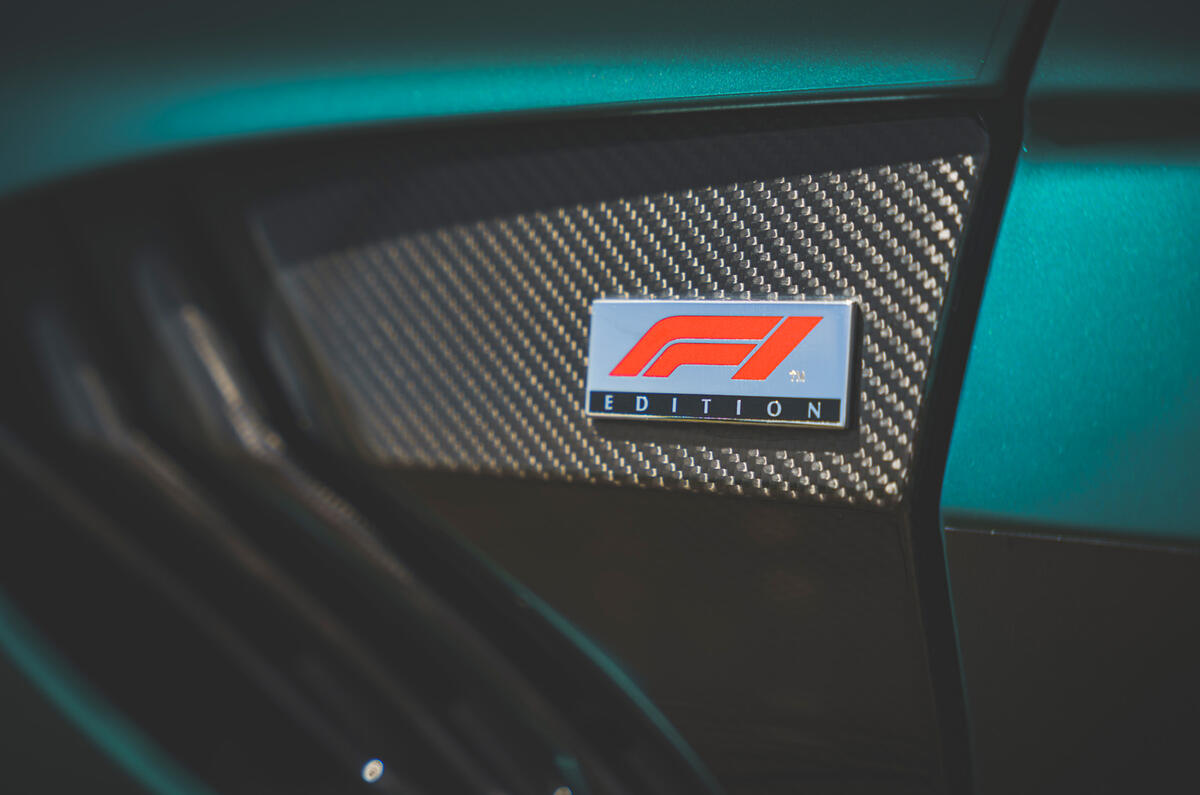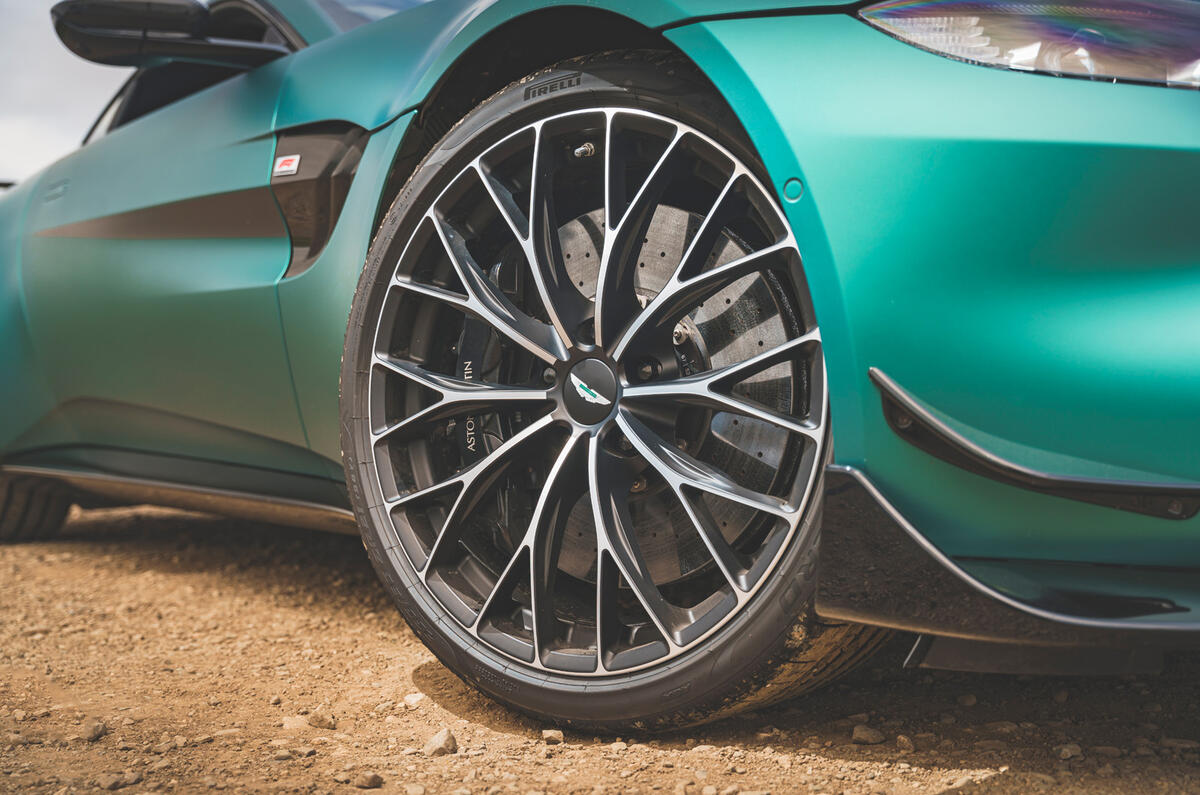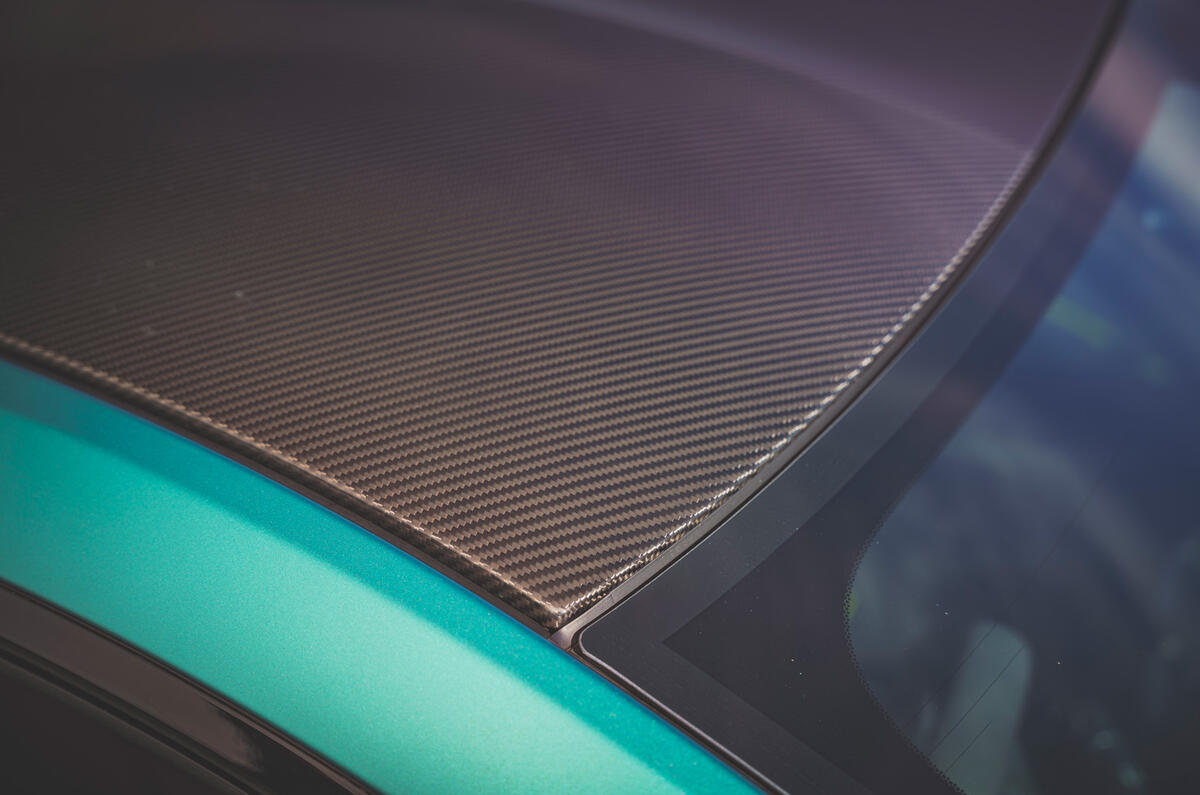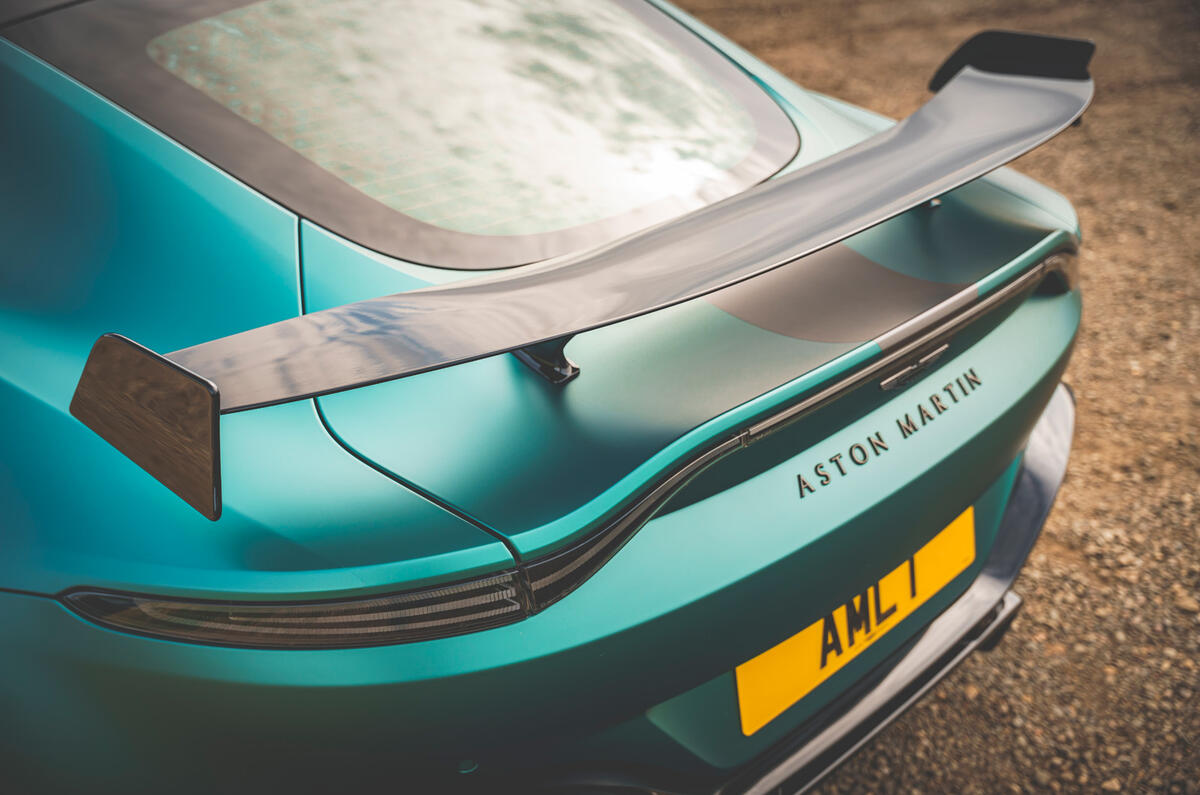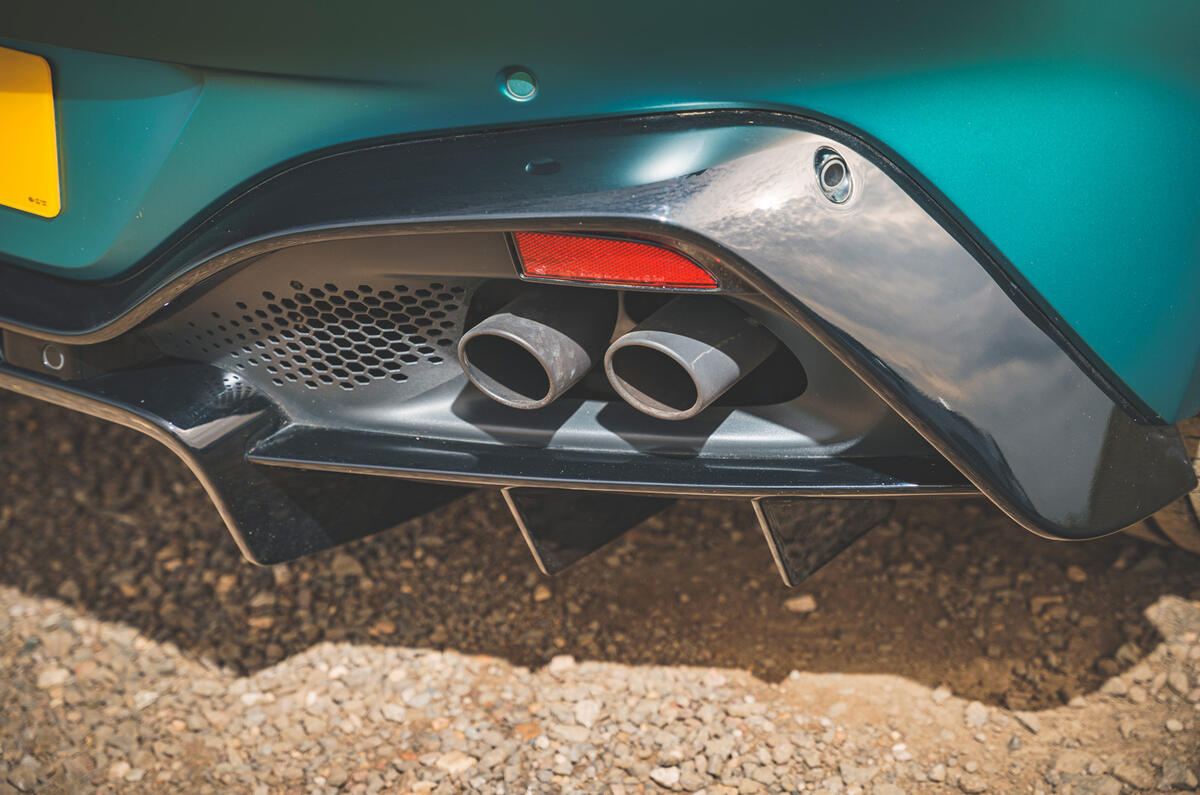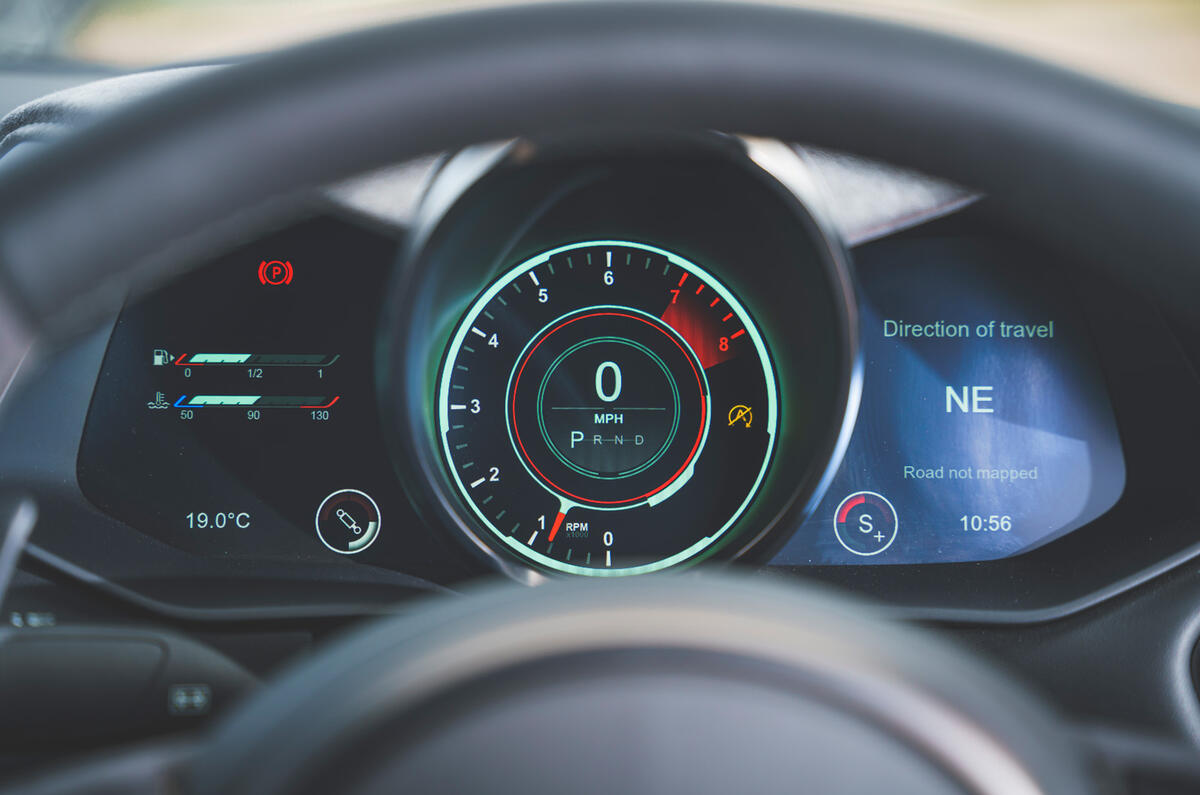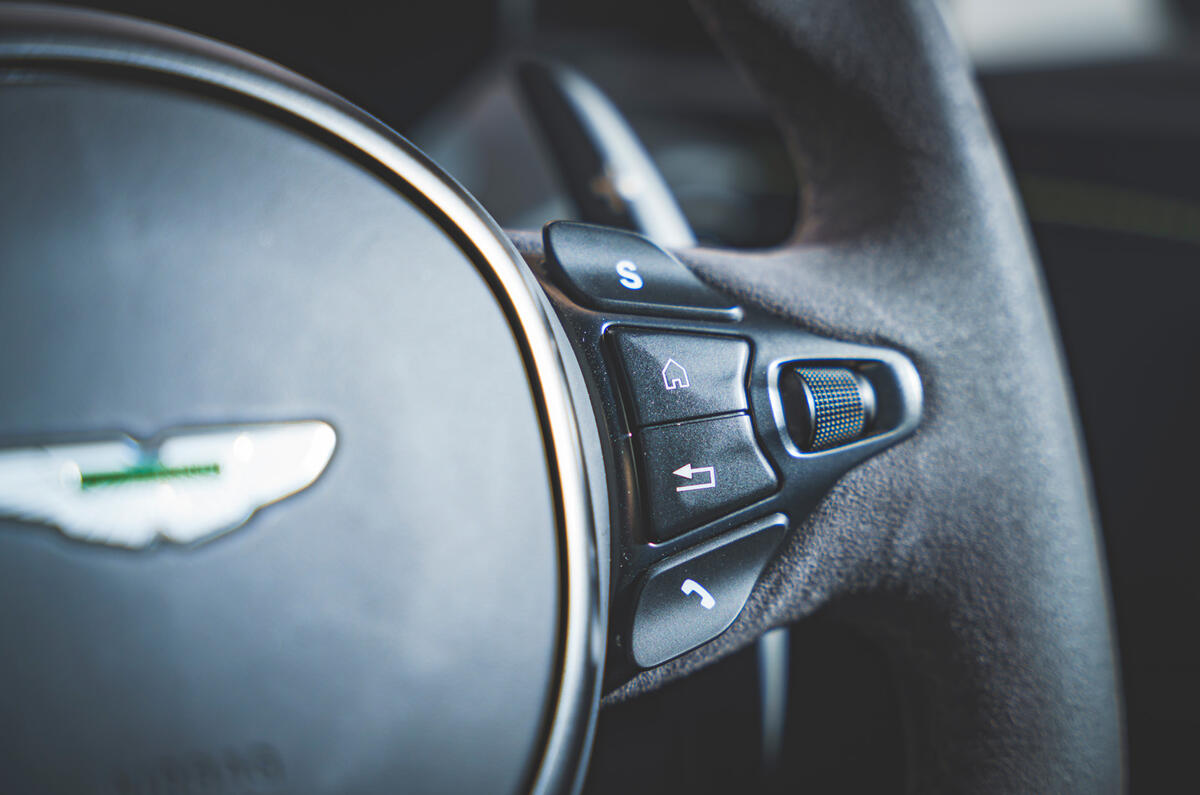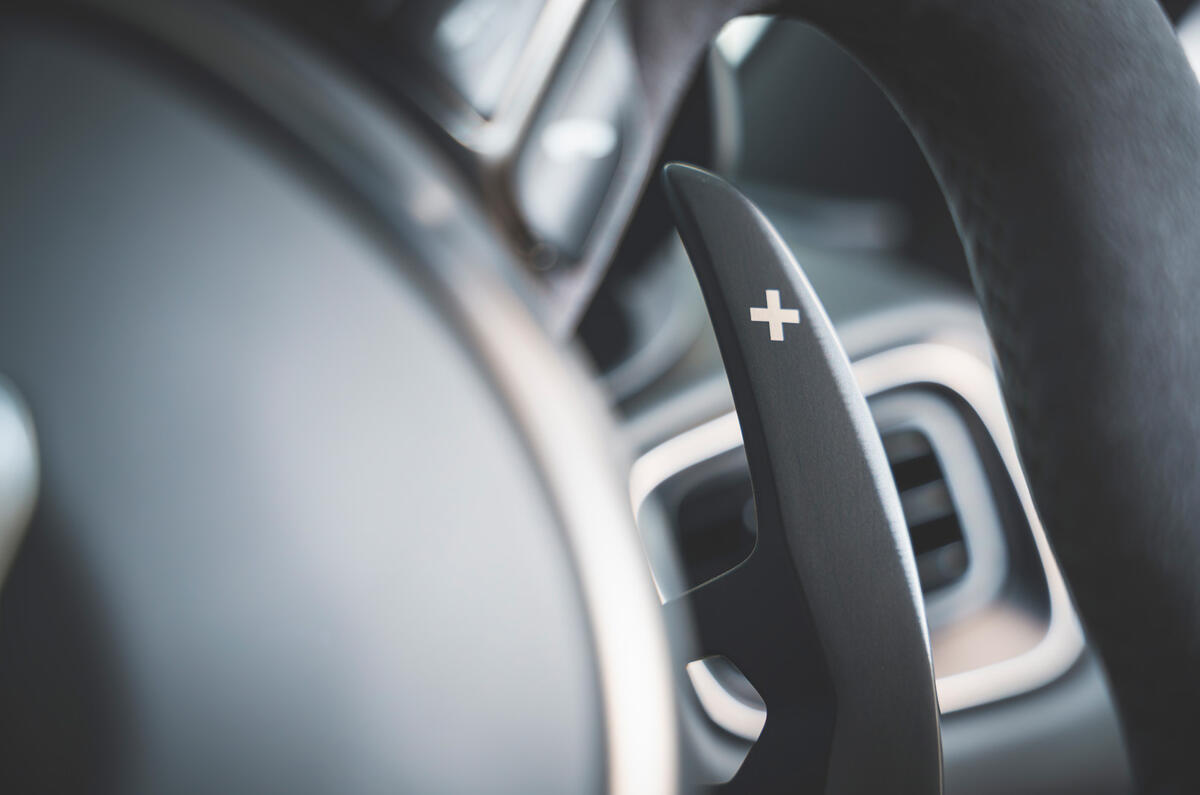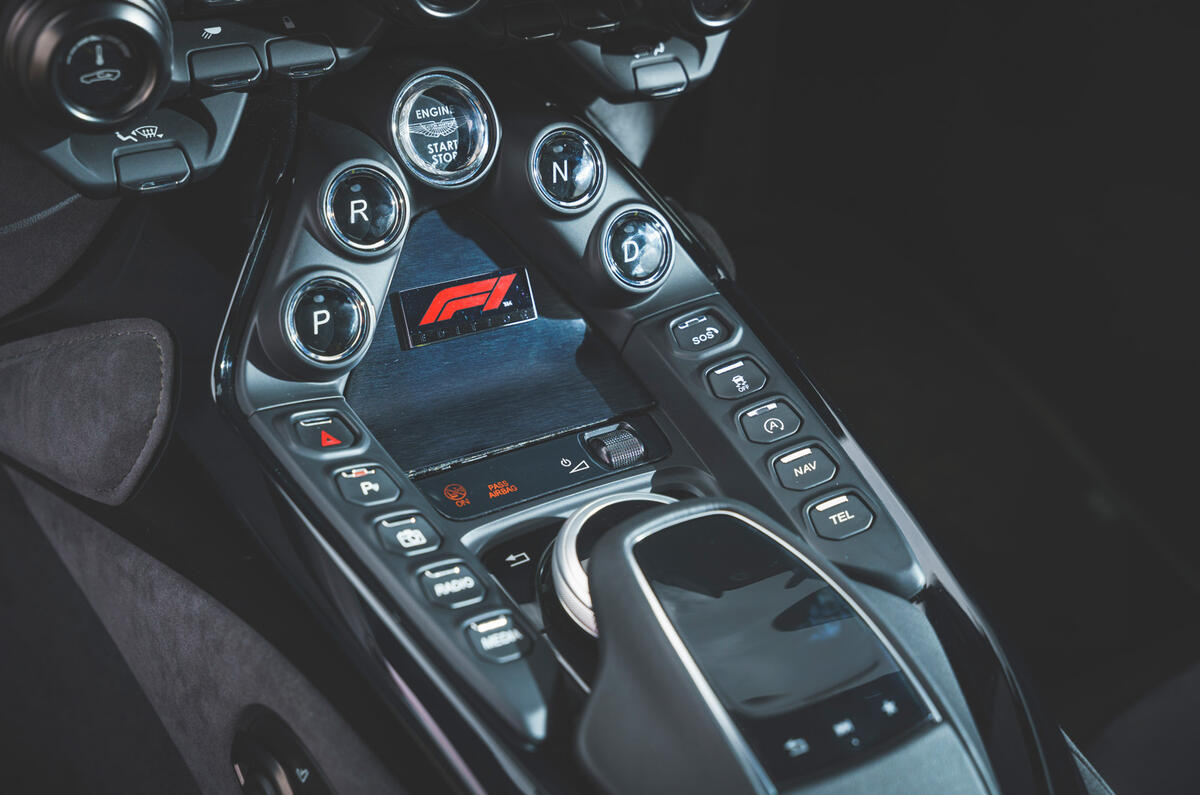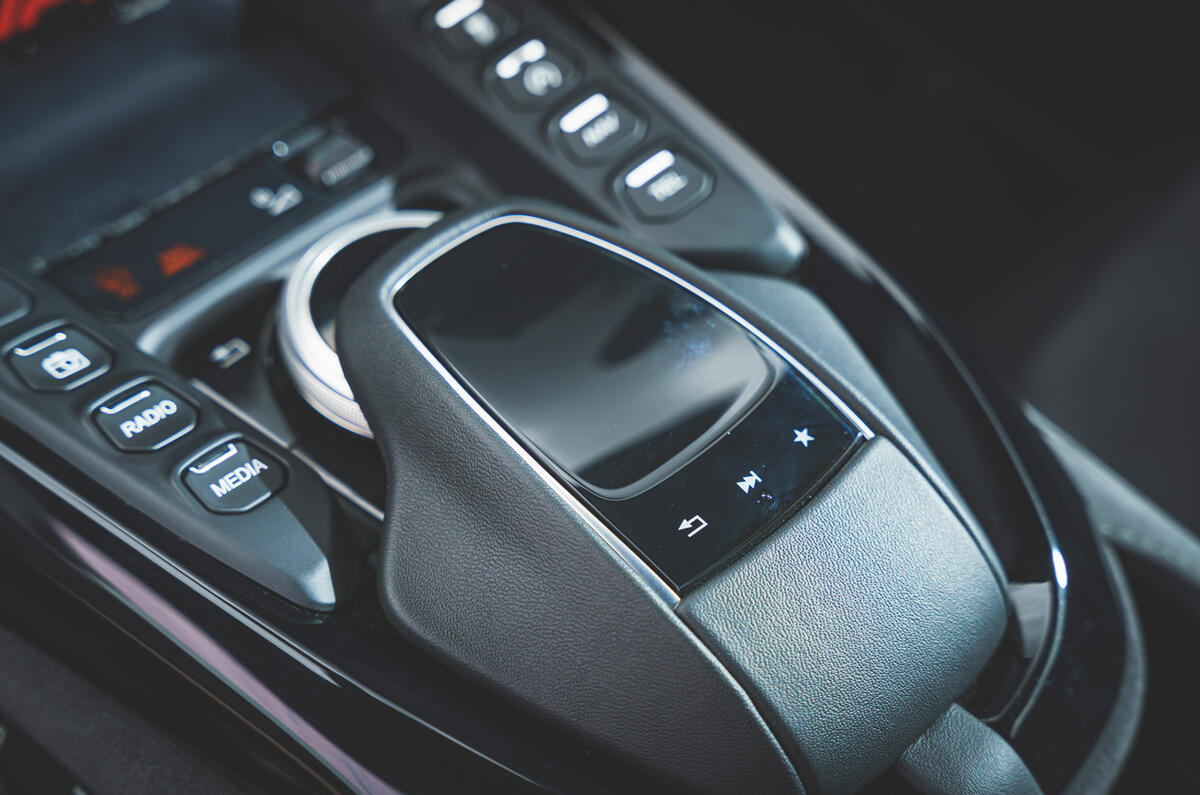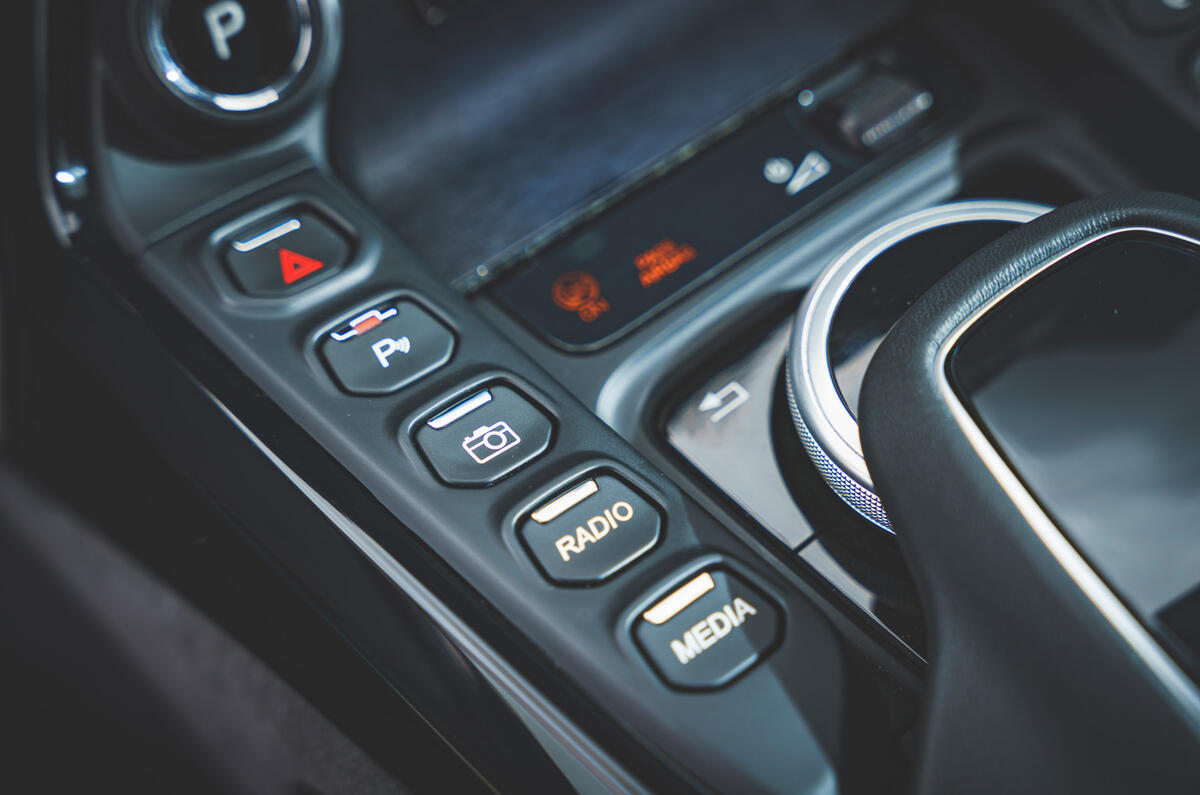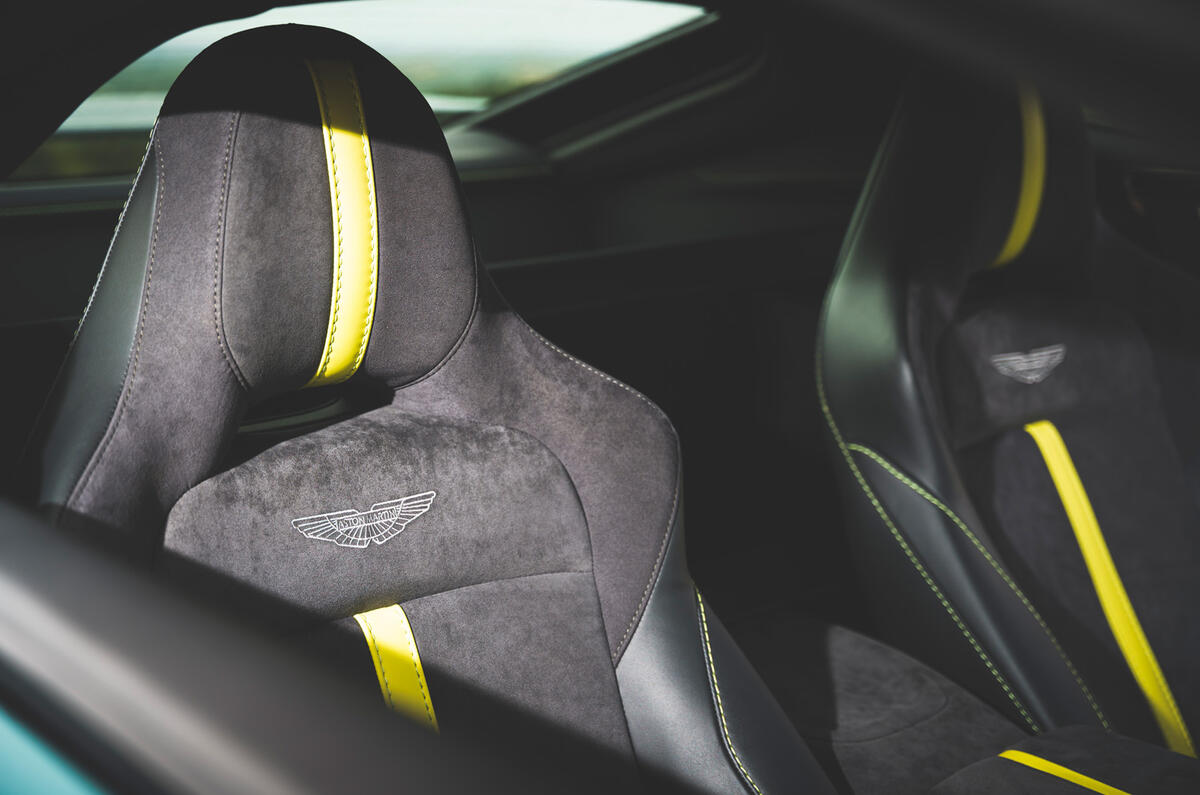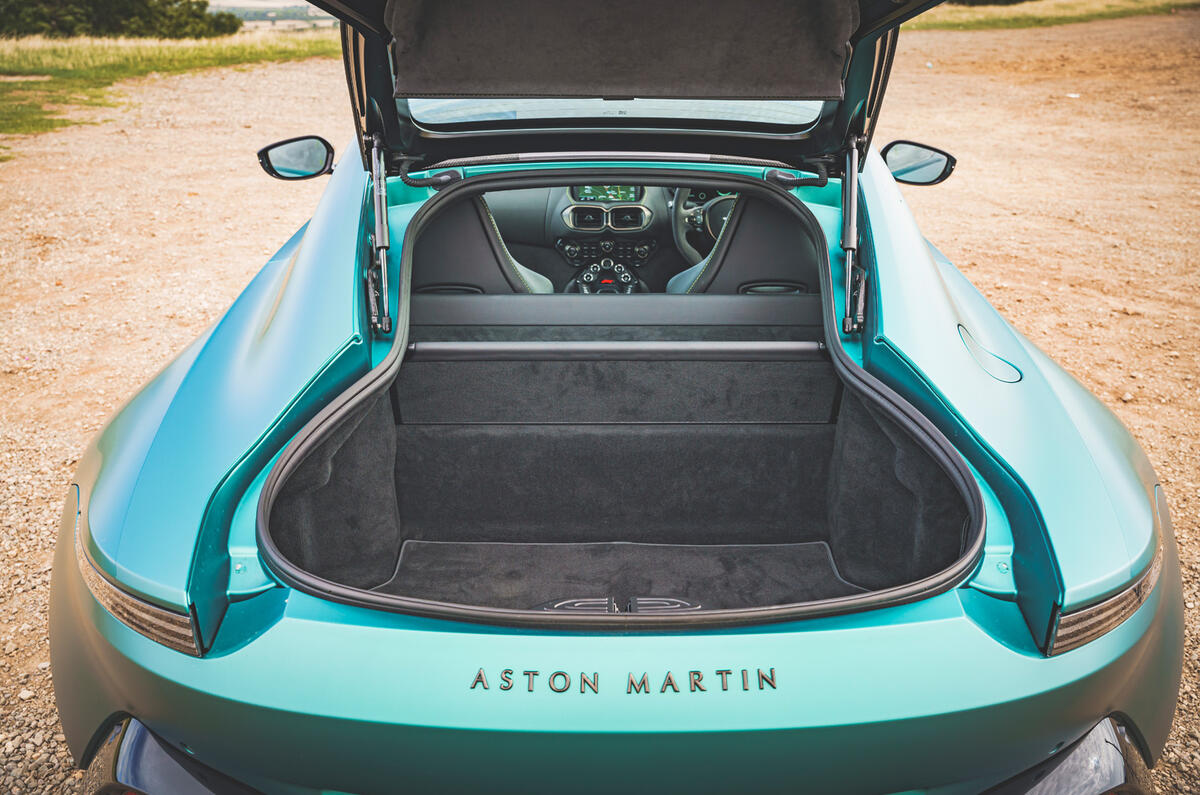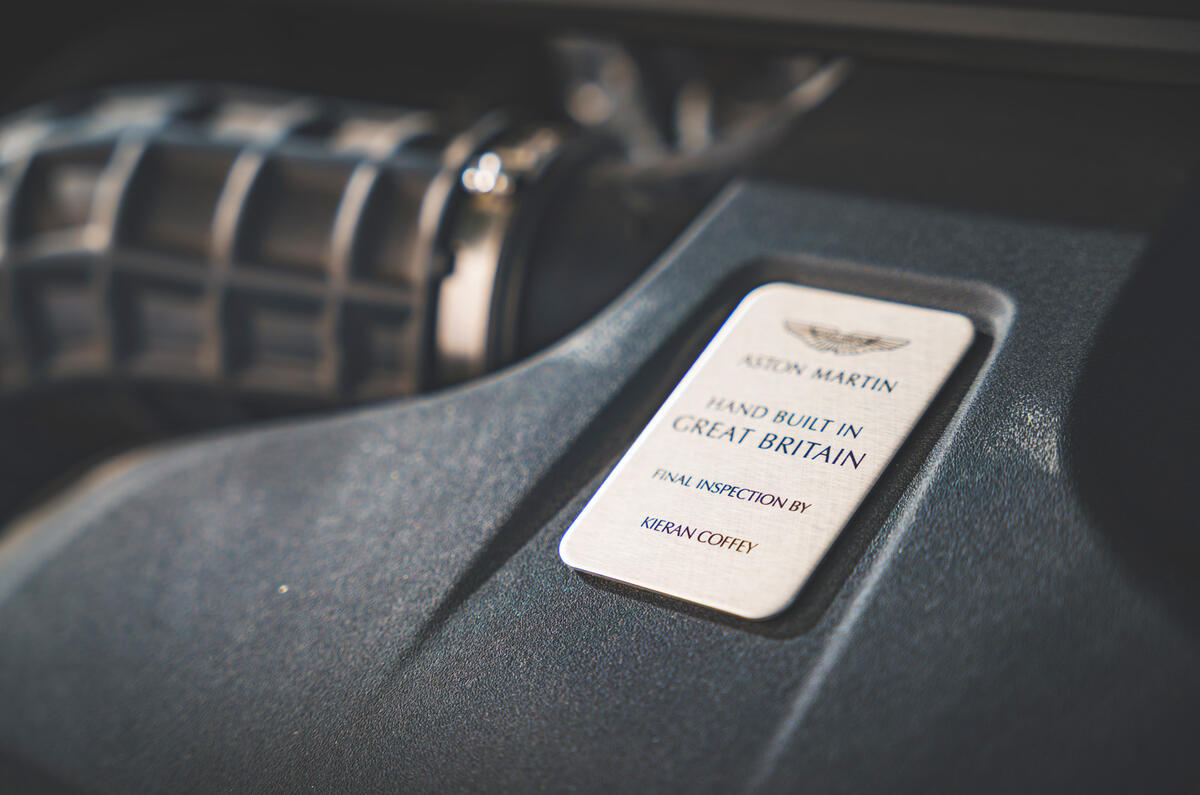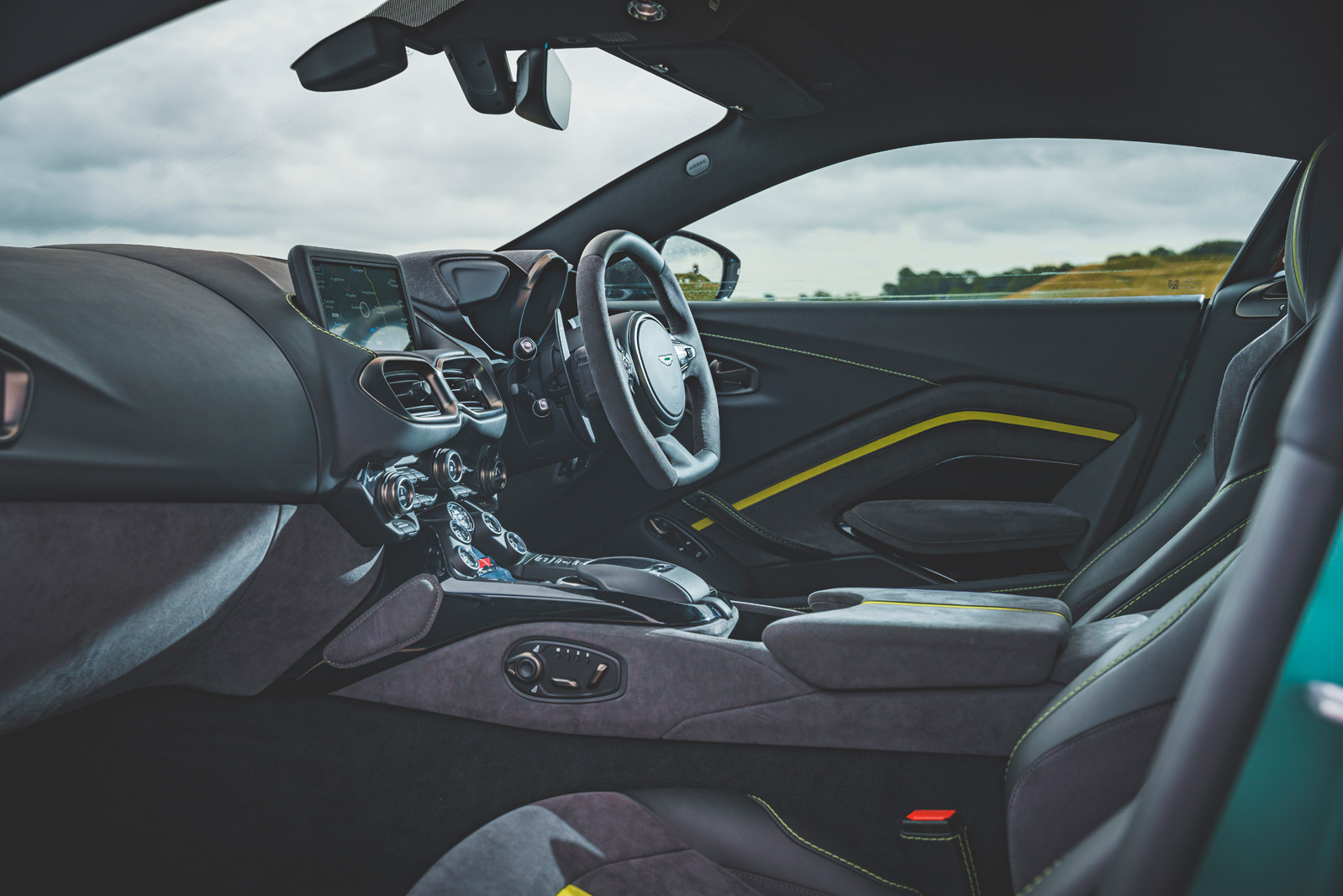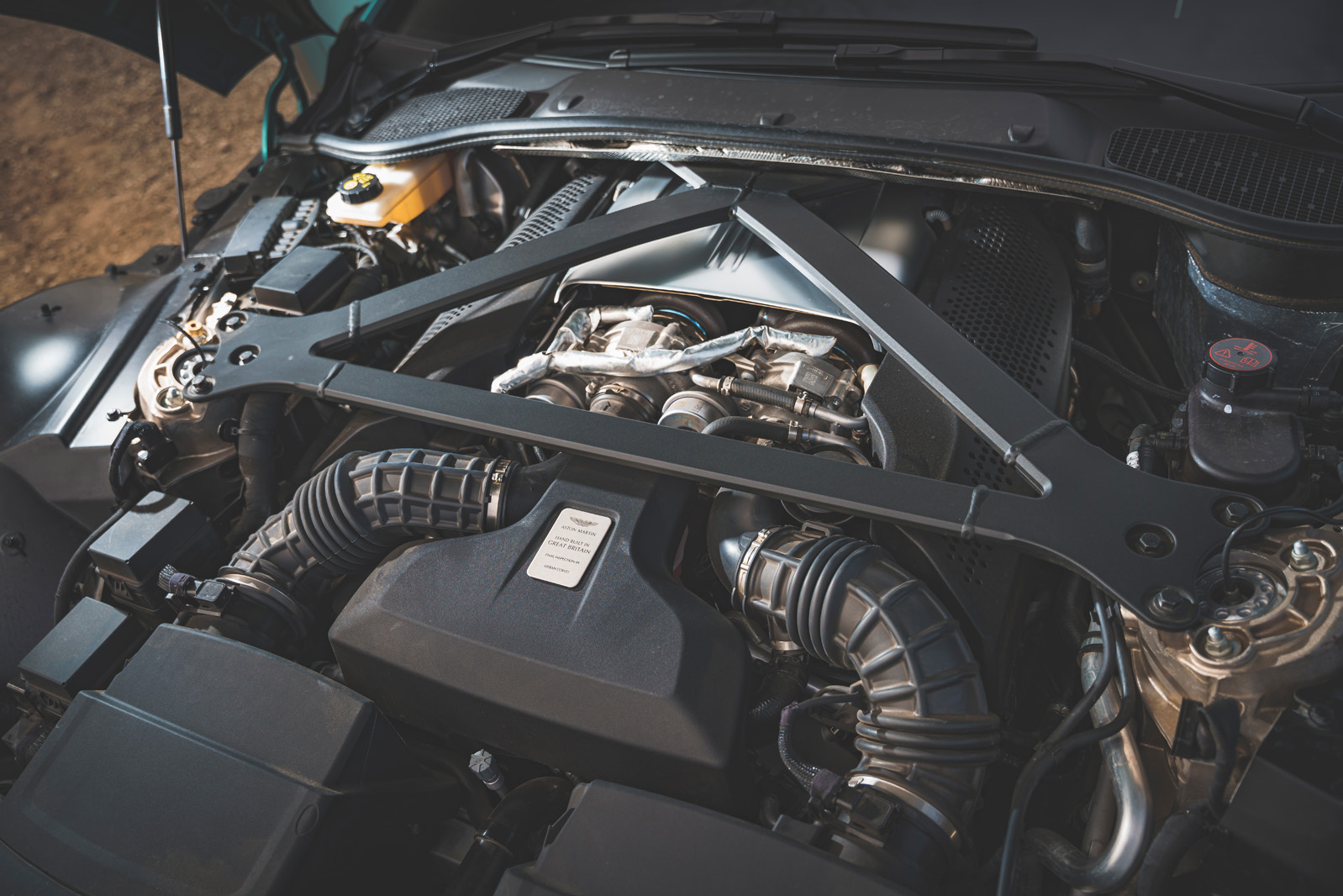A combination of black leather with lime stitching and lime-coloured leather accents, and grey Alcantara on the steering wheel grips, seats, door cards and elsewhere, gave our test car’s interior its fresh, extra-special performance flavour.
You can have red, black or grey as an alternative to the citrus-hued upholstery highlights if you prefer; you can also swap much of the car’s piano black gloss trim for carbonfibre trim; and an Alcantara headliner is also available, all as options. But for a handful of F1 trademarked badges here and there, however, that’s what makes the cabin of the F1 Edition different from that of any other Aston Martin Vantage: colour and trim.
Is it enough? Considering the modest price premium being asked for the car and the effort made elsewhere, it probably is. But if the Vantage was skating on fairly thin ice three years ago at its launch with some of its ageing Mercedes-sourced display and infotainment technology, it certainly now feels overdue a fairly wide-ranging mid-life interior refresh.
The car’s fundamentals are sound. Its driving position is low, straight and well supported, its controls are well placed and easy to reach, and forward visibility is reasonable enough through the car’s slim glasshouse. (It’s quite poor to the rear, but standard-fit 360deg parking cameras mitigate the penalty somewhat.)
There seems barely a square inch of the forward centre console and centre stack that hasn’t had a button or knob squeezed onto it, and not all testers liked the cluttered layout that results. But you can, without doubt, find the button you want when you need to deactivate the car’s engine starter-generator, dial back the stability control or engage reverse gear, for example; and Aston’s decision to move the Vantage’s push-button transmission controls to a lower level certainly makes them easier to reach than in Gaydon’s other models.
But there’s no mistaking the age of the car’s infotainment set-up, which is now at least two generations behind what you would get in a Mercedes of the same price and doesn’t offer smartphone mirroring of any kind. For a great many Aston Martin customers, and considering this car’s other lures especially, such considerations won’t matter much, but if Aston wants this car to continue to be taken seriously as an alternative to a higher-end Porsche 911 by its less loyal clientele, it’ll need to act to keep it competitive as a luxury sports car.
Aston Martin Vantage infotainment and sat-nav
Aston Martin’s 8.0in infotainment system in the Vantage can’t have much of a future in any model in the firm’s line-up. It’s controlled by Mercedes’ old rotary input device, which isn’t a chore to use and, being partly covered, also leaves the transmission tunnel looking neat and tidy.
But the set offers no touchscreen input at all and limited voice command compatibility, and among its principal advertised functionality in Gaydon’s promotional literature are a DAB/AM/FM radio and Bluetooth audio streaming. Smartphone mirroring isn’t offered and networked services are very few indeed. It’s hardly 21st-century stuff. And it’s not as if Aston Martin is the kind of brand that might engender some leeway on this score, like Morgan, Caterham or even Lotus might.
If the car has a get-out-of-jail-free card, it’s simply that the system, while old, still works pretty well. The navigation system has good usability and clear mapping, and the infotainment menus are laid out intuitively. Audio system quality on our test car’s Aston Martin Premium set-up (700W, £1325) was suitably crisp and powerful.


